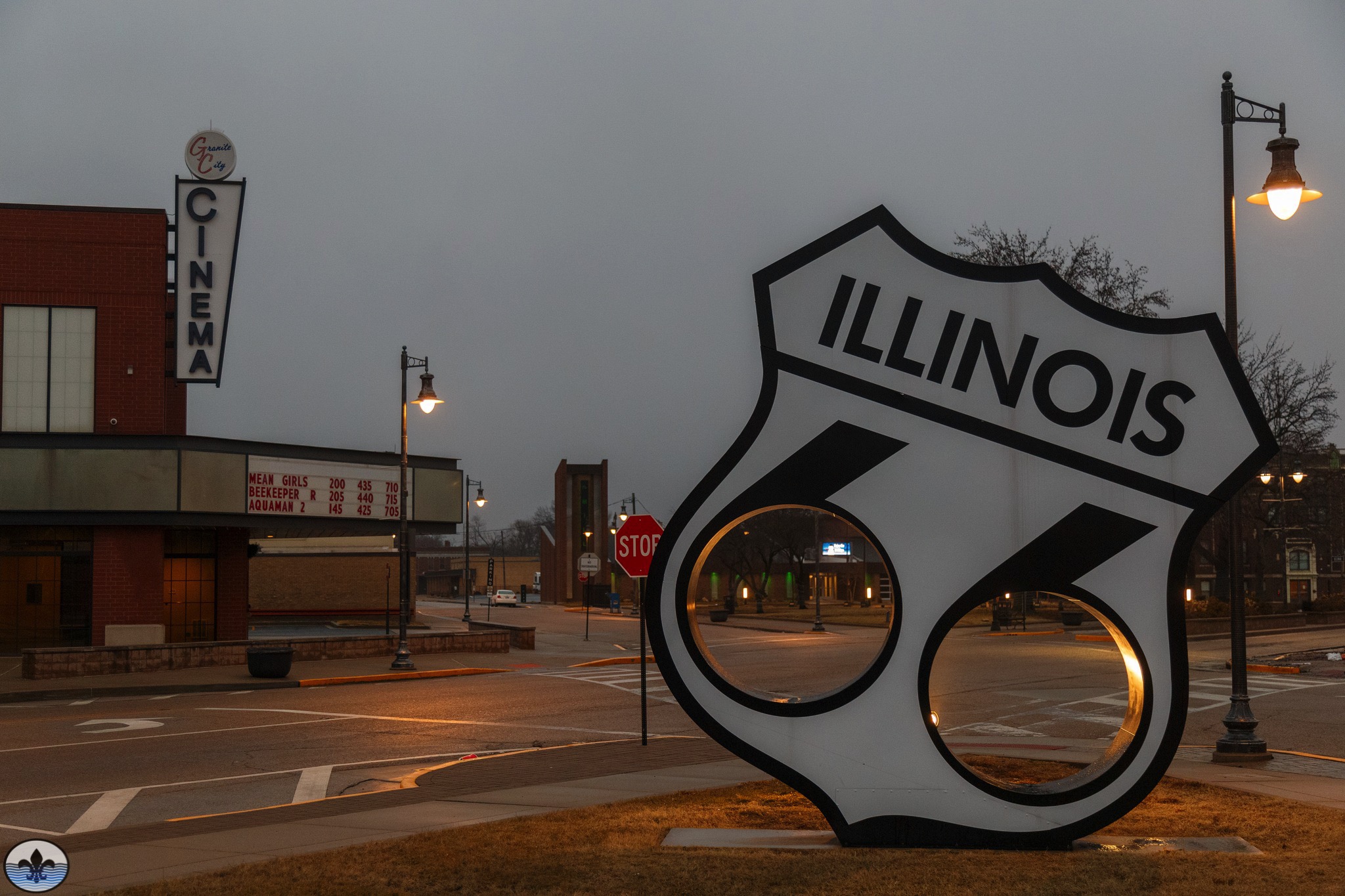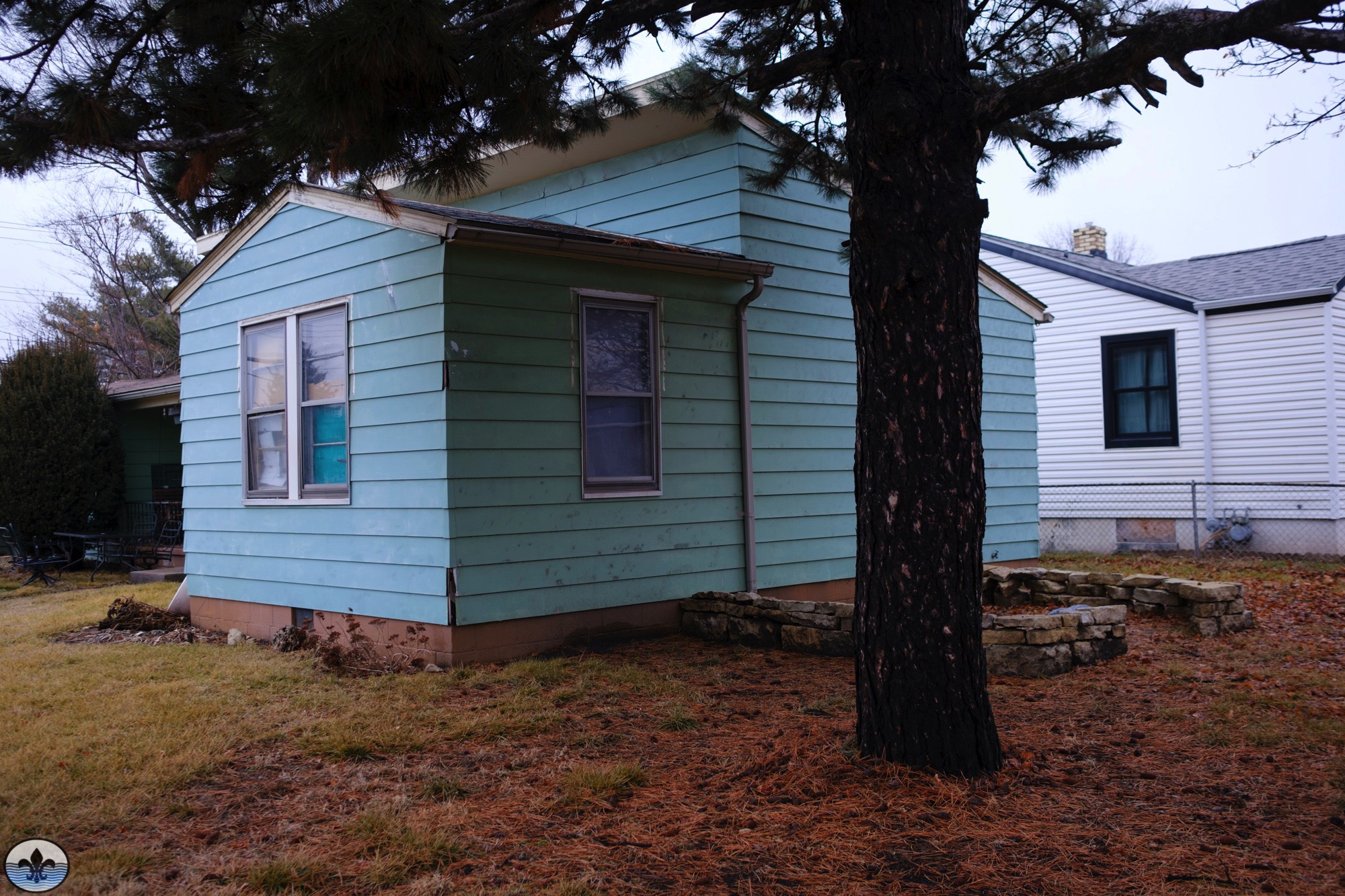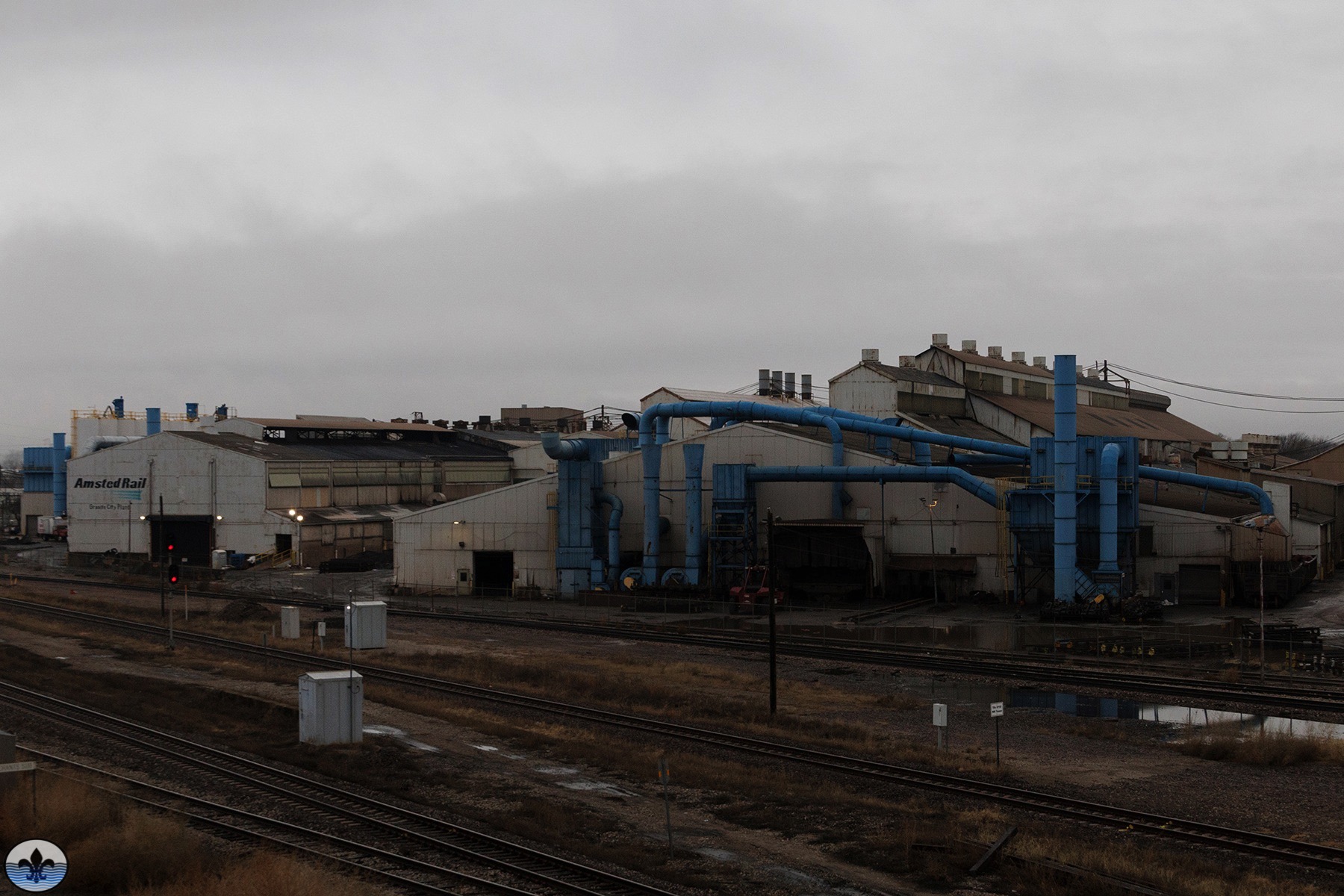
photo by Jason Gray
Granite City is the third largest city in Southern Illinois, and an important former company town responsible (in part) for the region’s and the nation’s industrial growth.

photo by Mike Matney

photo by Dennis Daugherty

photo by Sue Rakers

photo by Maureen Minich
Long before Granite City was founded, and well before European settlers had arrived, the surrounding region was a hub of trade, industry and culture for generations of Native American inhabitants. In fact, the American Bottom, as it is now known, hosted communities so advanced that they rivaled (or even surpassed) many cities in Europe at the time, in terms of their agricultural production, trade networks and amenities. The best known of these is designated as an UNESCO World Heritage Site, which we covered previously.
That the American Bottom would be so significant a region for so many Native American cultures, and later European settlers, is no surprise. The regular cycle of flooding that occurs within it (such a cause of concern for modern infrastructure) guarantees the land a fertility that is difficult to sustain elsewhere. And the source of that richness, the great rivers which convergence nearby, offered then, as they do today, a highway for transporting goods into and out of the region.
It is not fully understood why the Mound Builders left the area, though for subsequent tribes, it was the influx of European and American settlers that pushed them from these lands. In 1801, the first of these permanent settlements nearby present-day Granite City, called Six-Mile Settlement (because of its distance to St. Louis), was established. In subsequent years, the community added a church, a mill, a doctor and more. Much like nearby Edwardsville, community members from Six Mile played an important role in the politics of the burgeoning State of Illinois. Ninian Edwards, the Northwest Territory’s first Governor (and third for Illinois), named the county “Madison” after the U.S. President at the time and appointed Six Mile’s Dr. Caldwell as the County Court Judge. Ninian, through his leadership, was also largely responsible for the forced removal of Native Americans from the region and was narrowly defeated in his attempt to make Illinois a slave-holding state (many early residents of Six-Mile voted against this bid, which is interesting to note given Granite City’s later status as a sundown town).

photo by Joe Rakers

photo by Mike Matney

photo by Dennis Daugherty

photo by Jason Gray
Beginning in the 1820’s and continuing through the 1840’s, the massive immigration of German and Irish peoples to the St. Louis region grew the population of the city and surrounding communities exponentially. The German people in particular, were skilled, and in some cases highly educated, and brought with them industrial know-how. By the 1850’s, St. Louis was the fastest growing industrial city in the Midwest, which brought significant opportunity to the communities of the American Bottom. By 1858, two rail lines were extended to Kinderhook (changed from ‘Six-Mile’ two years earlier), cementing the industrial prospects of the community.
In 1866, Frederick G. and William F. Niedringhaus founded the St. Louis Stamping Company in St. Louis to produce affordable stamped tin kitchenware and were met with instant success. In the 1870’s the Niedringhaus Brothers’ perfected the granite ironware process, offering a product that was low-cost and incredibly durable. The success of this product and the Niedringhaus’ other businesses made them among the most influential members of St. Louis society, culminating with a successful run for Frederick in U.S. Congress.
By the 1890’s the brothers (and one of their sons) were again looking to expand the business’ production facilities, and inspired by the company town model of Pullman (the Niedringhaus’ also had offices in Chicago), set their sites on Kinderhook. The new company town, partially inspired in its design by Washington D.C., was named Granite City after the St. Louis Stamping Company’s major product and was incorporated in 1896. It was during this time that Granite City Steel began operation; a business that would later become synonymous with the successes and failures of the community.

photo by Dennis Daugherty

photo by Sue Rakers

photo by Maureen Minich
The first decade of Granite City following its incorporation had notes of both prosperity and peril. The population of the city ballooned alongside the production of the industrial plants, with nearly 10,000 new immigrants from Central Europe arriving to Granite City during just a two-year period. This rapid influx of new residents, however, created a temporary low demand for workers, resulting in the Depression of 1907, when some residents died of starvation. Nonetheless, the city continued to prosper overall through the first decades of the 20th Century, with major businesses like Anheuser-Busch, United Lead Company (Dutch Boy Paint), and Whistler Soda adding manufacturing or distribution facilities, and the city extending many amenities to residents, such as streetcars, the Washington Airdome amphitheater, hospitals, schools and more.
The industrial might of Granite City also brought with it the problems of industrialization. The Great Depression hit Granite City especially hard because of this dependency, resulting in several decades of rapid starts and stops for the city as taxes tied to the manufacturing plants (necessary for city services) went boon and bust. In 1956, NESCO (formerly St. Louis Stamping Company) ceased operation due to competition from new technologies, and the company town of Granite City was, for the first time, without its originating company.

photo by Mike Matney

photo by Jason Gray

photo by Maureen Minich

photo by Joe Rakers
Unlike other company towns that went belly up along with the companies they were built to support, Granite City was able to pivot away from this reliance. In the late 1950’s, Illinois State Legislature approved a community-sponsored initiative to establish a Regional Port District within its Mississippi River facing sections. Though it would take several decades to achieve, this Port District, now operated as America’s Central Port, grew to become one of the largest ports in the country–combining manufacturing, storage and distribution into a centralized site served by rail, water, air and truck shipping, and generating billions of dollars a year in revenue. Undoubtedly, this is a major part of Granite City’s vision for the future, but it is not the only one.
With the closing of NESCO, Granite City Steel’s presence in the community took on an increasing roll. Though purchased by Indiana’s National Steel in 1971 and U.S. Steel in 2003, the Granite City steel plants have remained among the most productive ones still operating in the country and have become a symbol of U.S. steel production. Many residents still rely on the prospects offered within the steel mills, even as the industry itself appears to continue to collapse. Though the future of steel production in the U.S. is uncertain, whatever it is meant to become will almost certainly depend upon the steel workers in Granite City, whose skill, grit and determination have served the city, region and country for over a century.
These efforts, combined with forward thinking projects like The District (a planned arts and entertainment area) and Granite City Art and Design District (‘a consortium of creative project spaces’) are helping to ensure that Granite City’s future burns as brightly as its past.

photo by Dennis Daugherty

photo by Joe Rakers

photo by Mike Matney

photo by Sue Rakers
After the Flood, we reconvened at Teri’s Route 66 Diner, which is a destination in itself, with a bar, diner, flea market and more!

photo by Mike Matney






